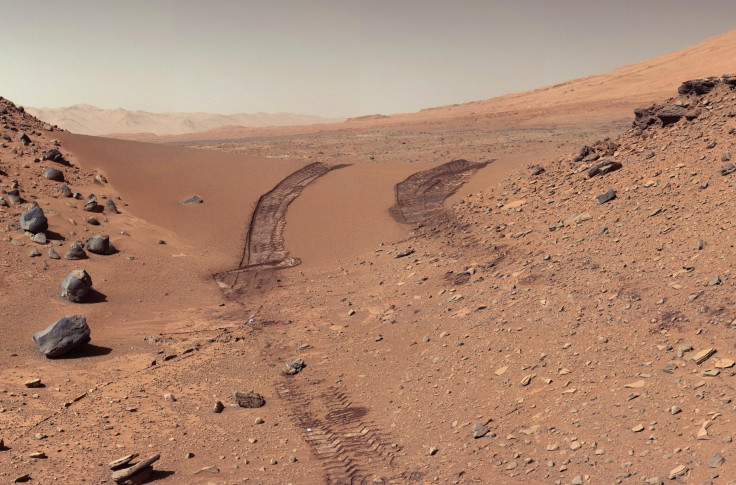Water On Mars May Have Covered 20% Of Martian Surface, Was Suitable For Supporting Life, NASA Says

The Red Planet was once a lot bluer than scientists previously thought, according to the latest research from NASA that found water on Mars may have once covered nearly 20 percent of its surface -- an area larger than the Arctic Ocean. Such a discovery depicts the ancient Martian planet as a hospitable place suitable for life rather than a hostile desert.
To determine the amount of water that once existed on Mars, scientists estimated how much water the planet has lost to its atmosphere over the course of billions of years. Researchers found that, based on how much water is contained in the planet’s polar ice caps, there was at one time 6.5 times as much water on Mars as is frozen there today. “With Mars losing that much water, the planet was very likely wet for a longer period of time than was previously thought, suggesting it might have been habitable for longer,” Michael Mumma, a senior scientist at Goddard and a co-author of the study, said in a statement.
Scientists have speculated for decades about the existence of vast oceans on Mars, but determining exactly how much liquid water was there has proven difficult. For the first time, scientists have used powerful infrared telescopes to measure the amount of water in the planet’s atmosphere, pinpointing two slightly different water molecules -- H2O and HDO -- which occur when a deuterium isotope replaces hydrogen in a water molecule. Such deuterium enrichment indicates that the surface of Mars lost a huge volume of water to space.
Based on their calculations, researchers estimated that the planet has lost about 87 percent of its surface water over the past 3.7 billion years. The remaining 13 percent got trapped in the polar ice caps. "Now we know that Mars' water is much more enriched than terrestrial ocean water in the heavy form of water," Mumma told CBS News. "Immediately that permits us to estimate the amount of water Mars has lost since it was young."
In December, NASA’s Curiosity rover discovered hidden gas molecules inside the Martian surface after drilling through a piece of rock. The nature of the molecules indicated the presence of ancient water.
© Copyright IBTimes 2024. All rights reserved.






















